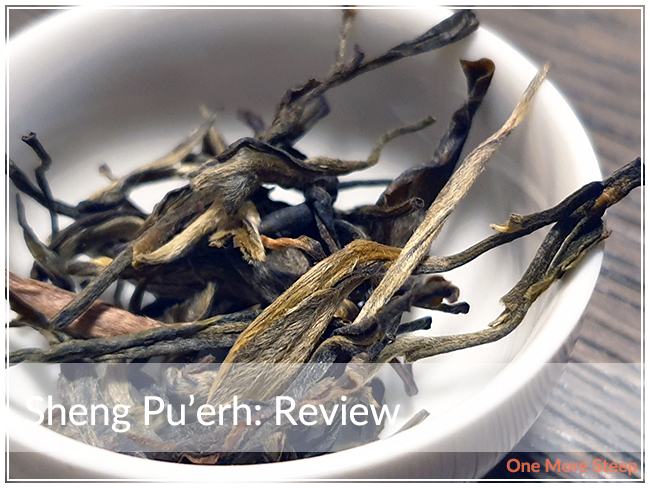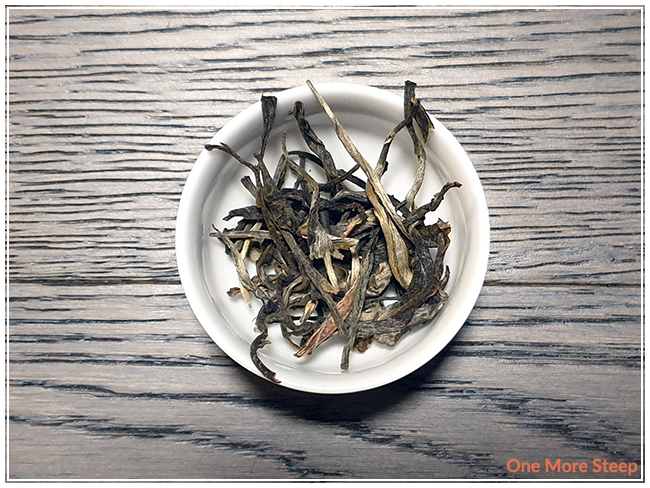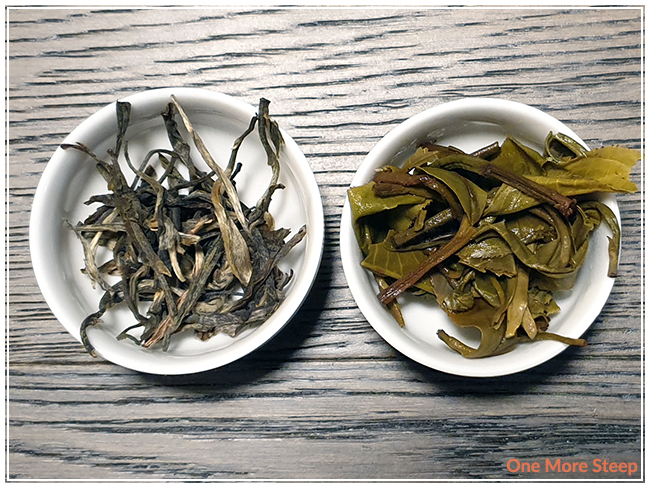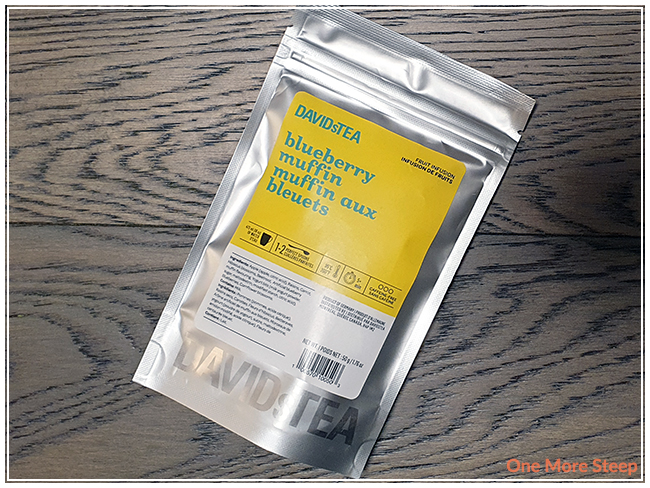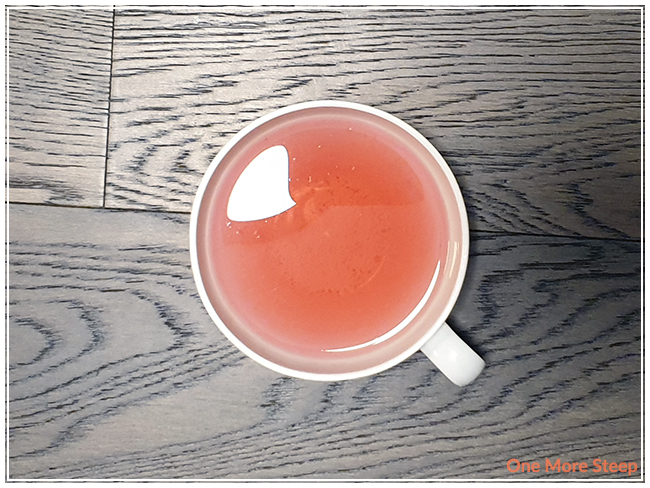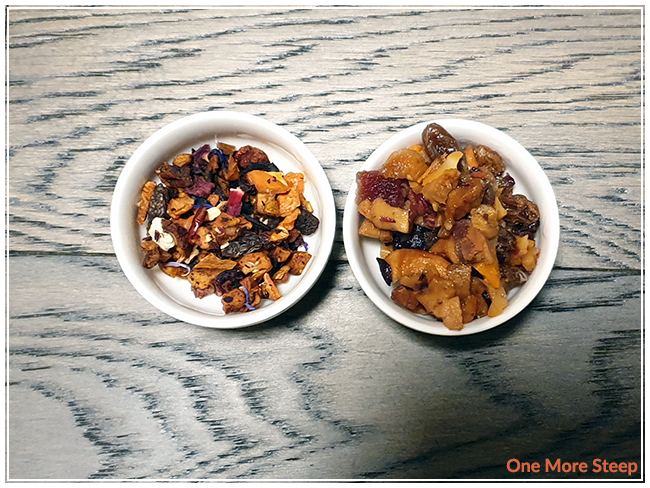Campfire Hojicha by DavidsTea
Green Tea / Flavoured
$8.98 for 50g
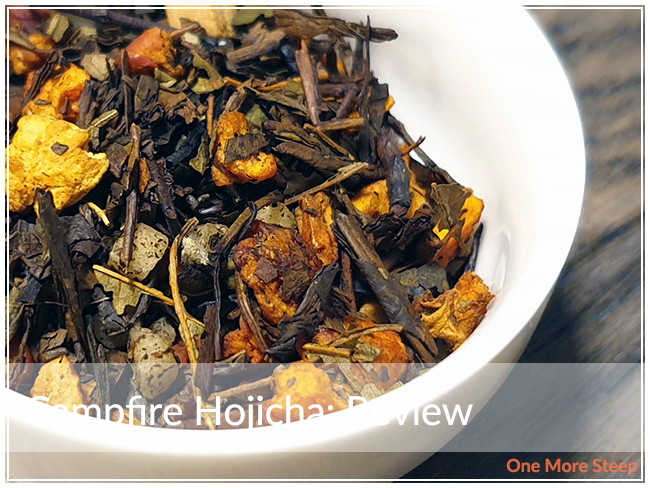
First Impressions
Always on the look out for new teas to try, and this one happened to just jump into my shopping cart a while ago because why not? I’ve been really enjoying hojicha in the last year or so, so it’s been fun trying new takes on a classic tea. Campfire Hojicha came in a sealed, resealable silver pouch. I still can’t get over the fact that DavidsTea opted to do such tiny print on their packaging. As someone who wears glasses and has relatively healthy eyes, I don’t have an issue with it, but I imagine there are people out there that would because of the font size. Just not the most consumer friendly – and yes, I’ll keep mentioning it until it gets changed because it’s a thing.
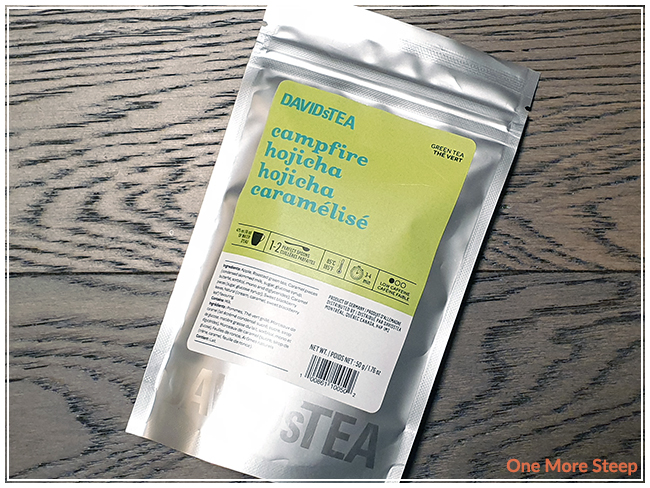
Campfire Hojicha doesn’t smell like a campfire to me at all, it smells like caramel with hints of apple, but I’m not getting anything from the dry leaf that reminds me of smoke or campfire. Campfire Hojicha consists of: apple, roasted green tea, caramel pieces, caramel pieces, sweet blackberry leaves, and natural flavouring. Don’t ask me why there’s caramel pieces listed twice, but they each have a different sub list of ingredients. The first one consists of: condensed skimmed milk, sugar, glucose syrup, butterfat, sorbitol, mono and diglycerides. The second one consists of: sugar and glucose syrup. Confused? I’m a bit as well.

Preparation
DavidsTea recommends steeping Campfire Hojicha in 85°C (185°F) water for 3 to 4 minutes. I opted to do an initial steep of this green tea blend for 3 minutes.
First Taste
Campfire Hojicha steeps to a deep orange, with some tea debris that managed to escape my stainless steel infuser (if this type of thing bothers you, I’d recommend using a filter bag for your loose leaf tea). It smells like caramel, and it actually tastes really sweet. The primary taste that I get is caramel, with some apple fruitiness at the tail end of each steep. I find it overly sweet, and I think that’s because of all the apple and caramel that is in the blend. I don’t really taste the hojicha base, or get any smoky traits in the flavour profile.
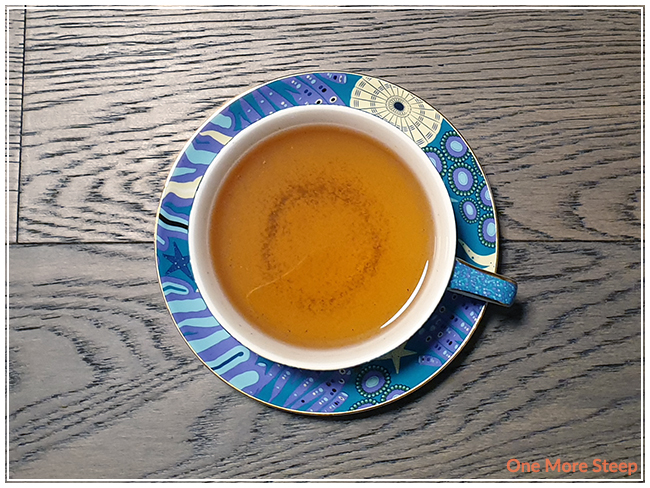
A Second Cup?
I resteeped Campfire Hojicha once, and found that the flavour didn’t really change, just got a bit weaker in terms of flavour. It stayed pretty sweet the second time around.
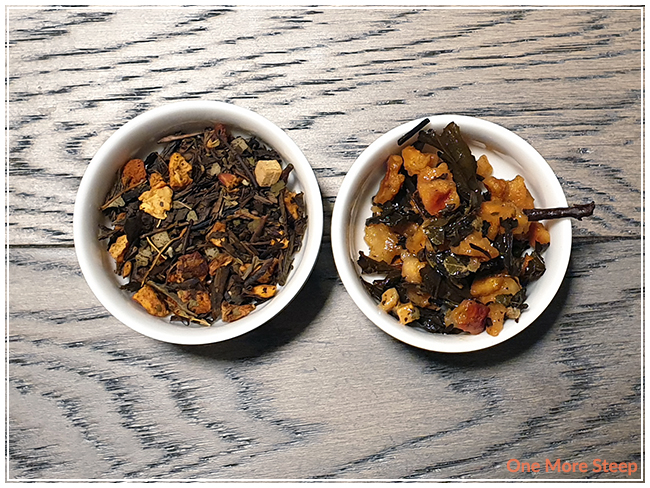
My Overall Impression
![]()
I didn’t like DavidsTea’s Campfire Hojicha. I was just a bit disappointed that the flavour of the blend itself didn’t live up to my expectations. Especially with a roasted green tea base like hojicha, I expected the roasted flavours to really shine through because hojicha isn’t usually too subtle (in my opinion). The caramel flavours were definitely overpowering a lot of the other ingredients and it overly sweet for me (and I’ve got quite the sweet tooth!). I think this blend would do better with less caramel and perhaps a heavier hand with the hojicha base, or even adding a little bit of lapsang souchong to it to really make it smoky and make me think of a campfire.
Curious about the cup rating system? Click here to learn more.
